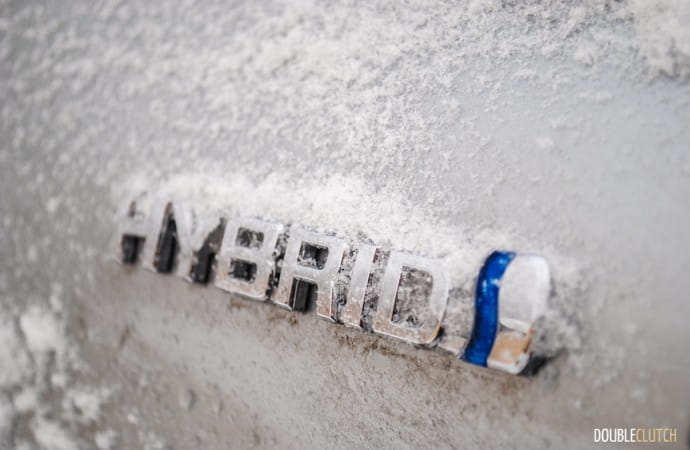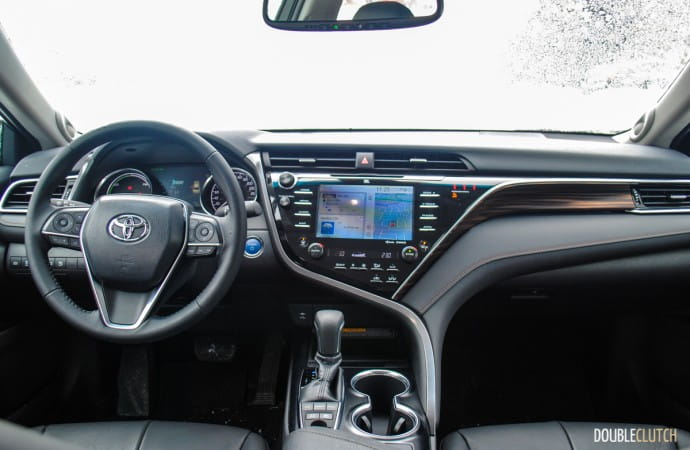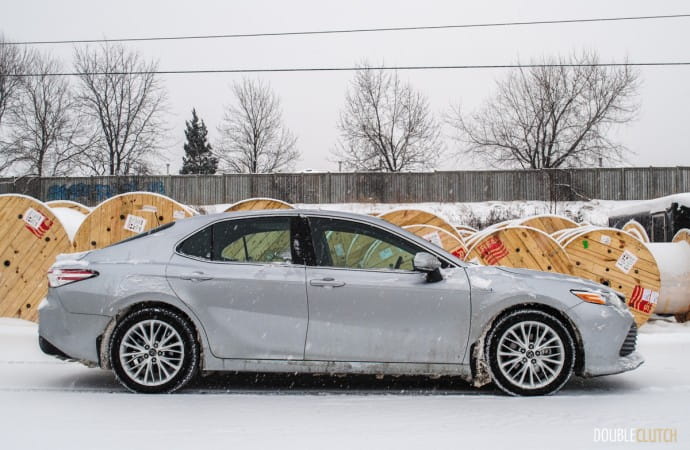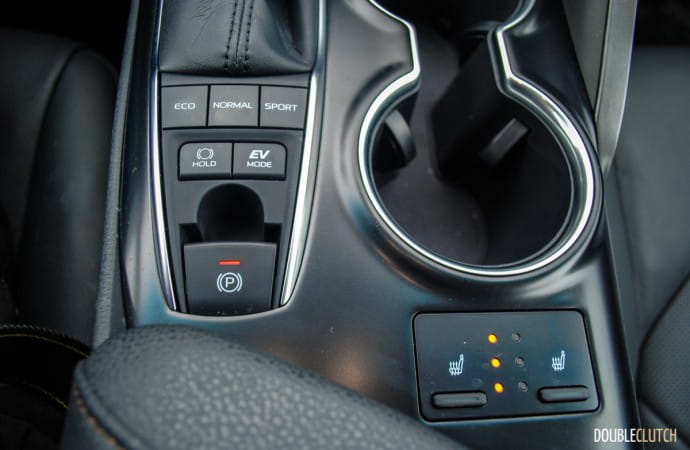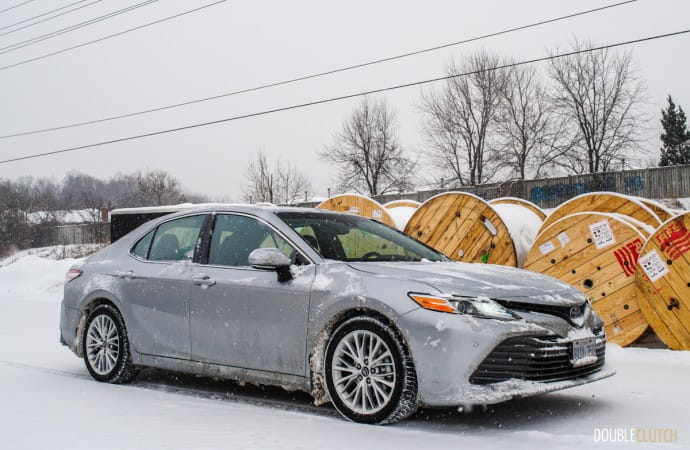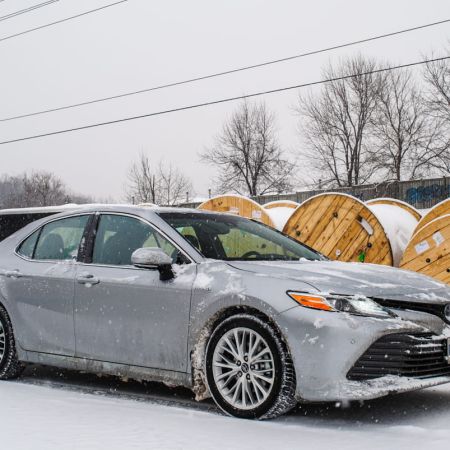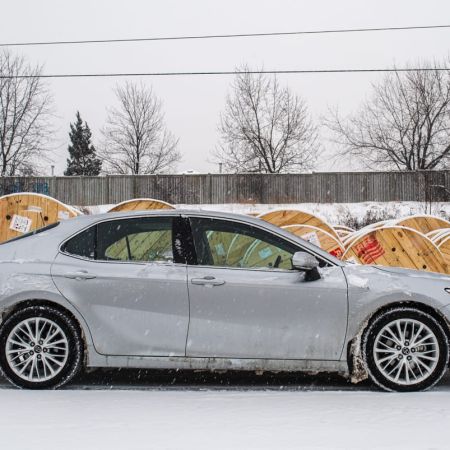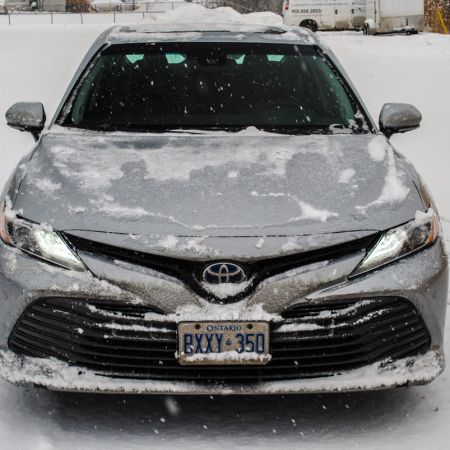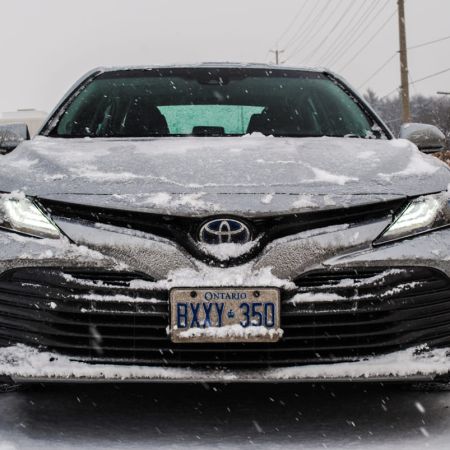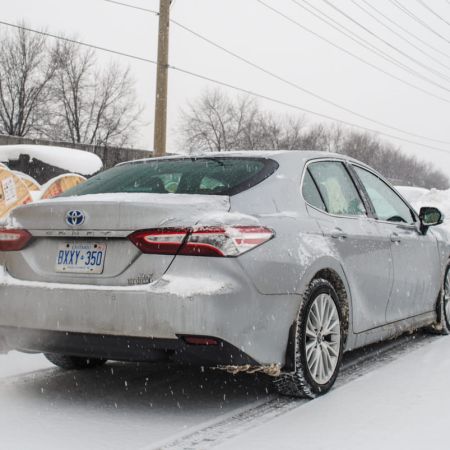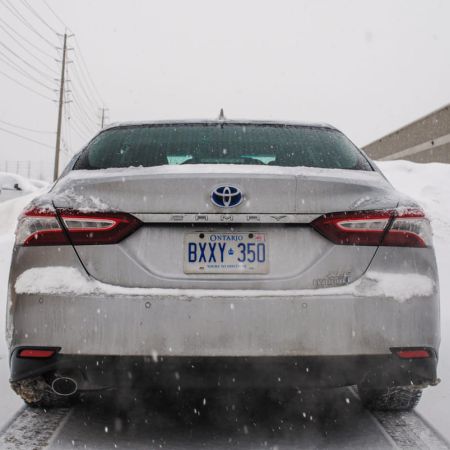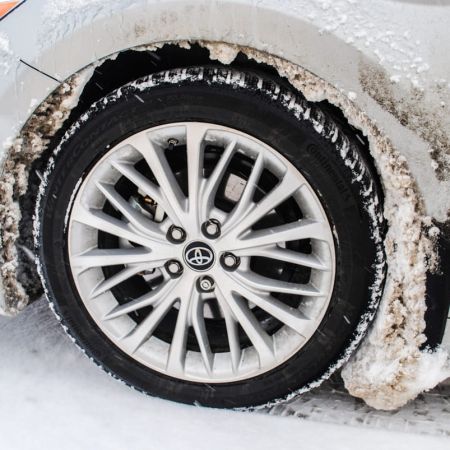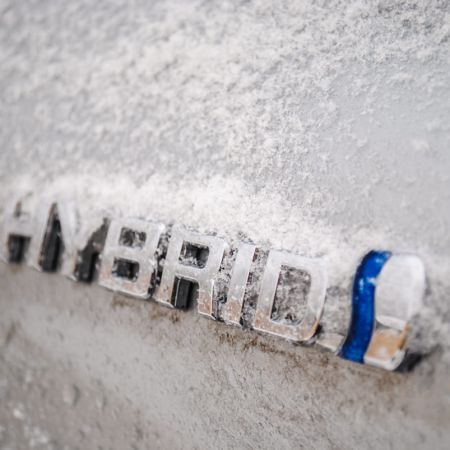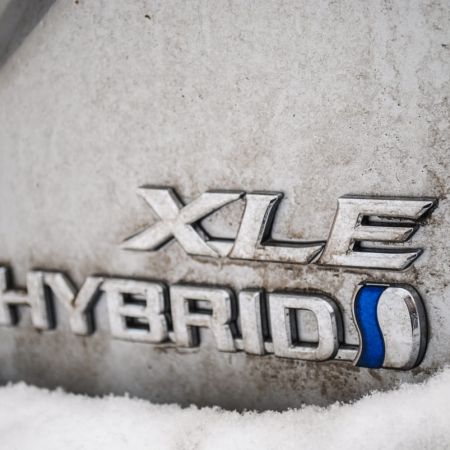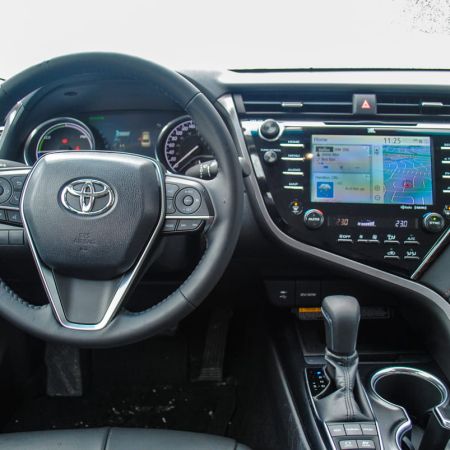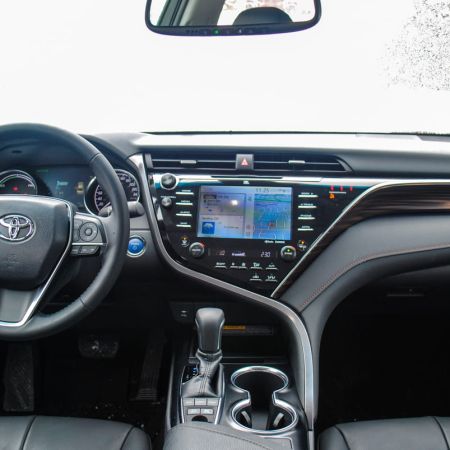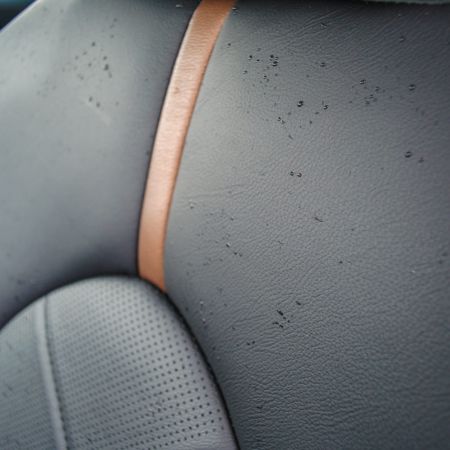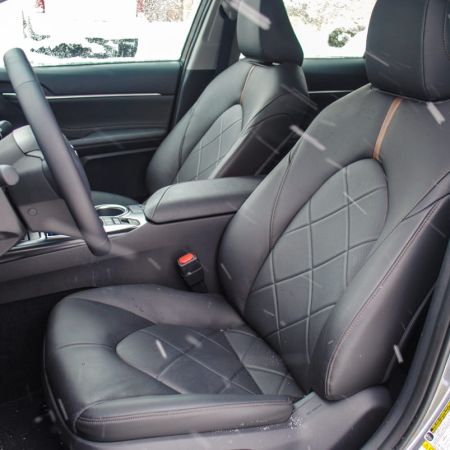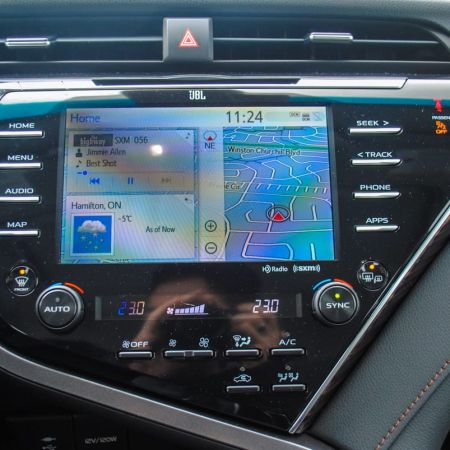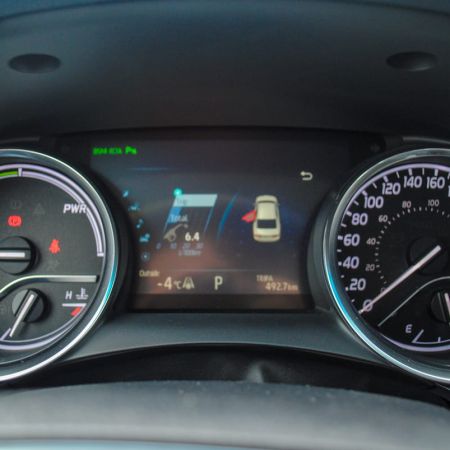Toyota hybrids have become tried and true soldiers of the road. From family haulers, taxi fleets, and daily commuters, Toyota has been the company that not only brought hybrid technology to the masses, but proved that it could be just as reliable as, well, a Toyota. With an all new Camry out for 2018, Toyota didn’t waste any time getting the updated hybrid version out to market either. Our test of the 2018 Toyota Camry XLE Hybrid brings the comfort of a Camry, and the fuel economy of a hybrid, over a seriously snowy week.
This latest iteration of the Camry is obviously a lot more aggressively styled than previous generations. As the traditionally conservative Toyota buyers are moving into CUVs, the designers have afforded themselves a little more sense of adventure with their sedans. That said, the Camry still goes relatively unnoticed on the roads, especially our Celestial Silver tester, but it’s easy to appreciate the fluid lines that stand in contrast to the Camrys of the past. The SE and XSE trims get unique fascia and side skirts to complete the sporty look, while other trims, including the top-line XLE here stick with the more conservative look.
One thing I quite like about the Camry Hybrid is that Toyota doesn’t force you into a particular trim package to have the Hybrid. You can get into a Camry Hybrid LE for a bargain of $31,490, or you could opt for an SE with its sportier looks for $34,190. The fully loaded XLE like our test car will set you back $41,190. At that price, the Camry does come fairly well equipped with features like leather seats, dual zone climate control, JBL audio, Toyota’s latest Entune infotainment system on an 8” screen, heads-up display, and aerial view camera.
All Camry models come standard with LED headlamps like the Corolla (reviewed here), heated front seats and Toyota Safety Sense “P”. That’s enough equipment to keep you comfortable and entertained on the commute, but there are a handful of glaring omissions. Firstly, there is no heated steering wheel, heated rear seats, and no Android Auto or Apple CarPlay compatibility either. Oddly, these features are not just missing from this model; they’re simply not available on the Camry. The fact that this stuff is widely available, even in the lesser compact segment, makes it a bit of a miss in the Camry.
Feature list aside, the interior of the Camry Hybrid is quite a nice place to be. There are lots of soft-touch plastics, comfortable leather seating with a relaxed driving position, good visibility, and a well-designed centre console with lots of storage and an integrated wireless charging pad for your devices. Overall fit and finish is outstanding, as you might expect in a Camry, but it is a Toyota after all and not a Lexus, so there are some lesser materials to be found in certain spots.
Despite carrying the bulky hybrid batteries there is no notable compromise to rear seating or trunk space, both of which are huge. However, the rear seats do not fold to offer a pass-through as you’d expect in a traditional sedan. There is also no handle on the interior trunk lid to enable closing it without touching the outside, it’s a tiny detail, but it’s annoying during the winter when the car is covered in filth.
The latest Hybrid Synergy Drive system powering our tester is rated at 208 horsepower with the electric drive, combined with a 2.5L four-cylinder Atkinson cycle engine. Power flows through a CVT transmission and while the drivetrain might not sound exciting, it offers more than enough power for comfortable day-to-day driving, and even makes light work of highway passing thanks to the instant torque of the electric support. You can also thank the electric support for the smooth and linear power delivery that helps give the Camry a nice refined feeling under acceleration. Of note, Toyota claims that the hybrid batteries have been designed to last the life of the vehicle, which should help ease the minds of some prospective buyers.
Behind the wheel, the Camry is actually a very nice car to drive. As mentioned, the hybrid’s power is more than adequate, but ride is also nice and plush thanks to a soft suspension setup, a low center of gravity and the additional weight of the batteries. As such, the Camry Hybrid feels well planted and very relaxing to drive. In that same vein the steering is direct, light and doesn’t offer much in the way of road feel. Cabin noise is also essentially non-existent. All of this makes the Camry a joy to melt away the miles, as it glides down the highway or floats over the city’s wintery streets.
The Camry Hybrid will hold up to 49.3L of regular fuel and after a week worth of rush hour commuting, average fuel consumption sat right at 6.2L/100km. That’s shy of the rated 4.9L/100km city and 4.8L/100km highway, but in fairness it was a bitterly cold and snowy week that certainly influenced fuel consumption. Regardless, even at 6.2L/100km you’d be hard pressed to find a commuter as economical and as comfortable and relaxing to drive as the Camry.
Speaking of winter, our week with the Camry was hit by a particularly nasty blast of snow and ice that lasted for days. The Camry held its own with a lightning quick rear defroster and a heater that had no problem getting the cabin up to temperature in minutes. Our tester came equipped with a nice set of Continental Winter Contact tires on the nice XLE 18” wheels which came in handy, but the Toyota’s traction control system has a tendency to intervene a lot more than I’d like it to. The car isn’t incompetent in the snow by any means, and hustles through the white stuff competently.
The Camry faces some stiff competition in its segment, particularly from the new Accord (reviewed here), but also from other segments that have drawn buyers out of the traditional sedan market and into the crossovers and SUVs. Regardless, the 2018 Toyota Camry XLE Hybrid, despite its minor shortcomings, stands as an exceptional balance between affordability, fuel economy, practicality and the relaxed dynamics that commuters like myself really appreciate.

